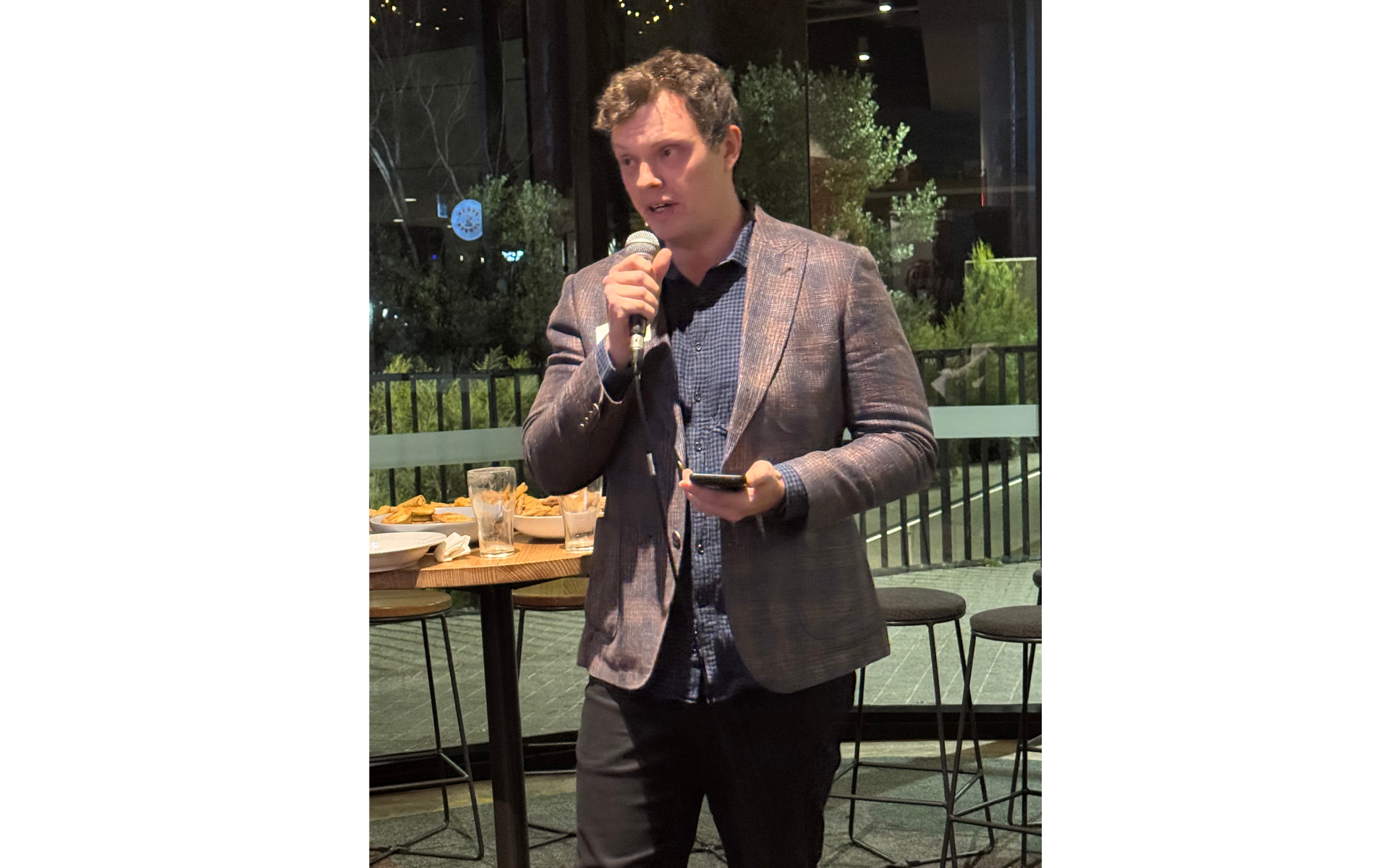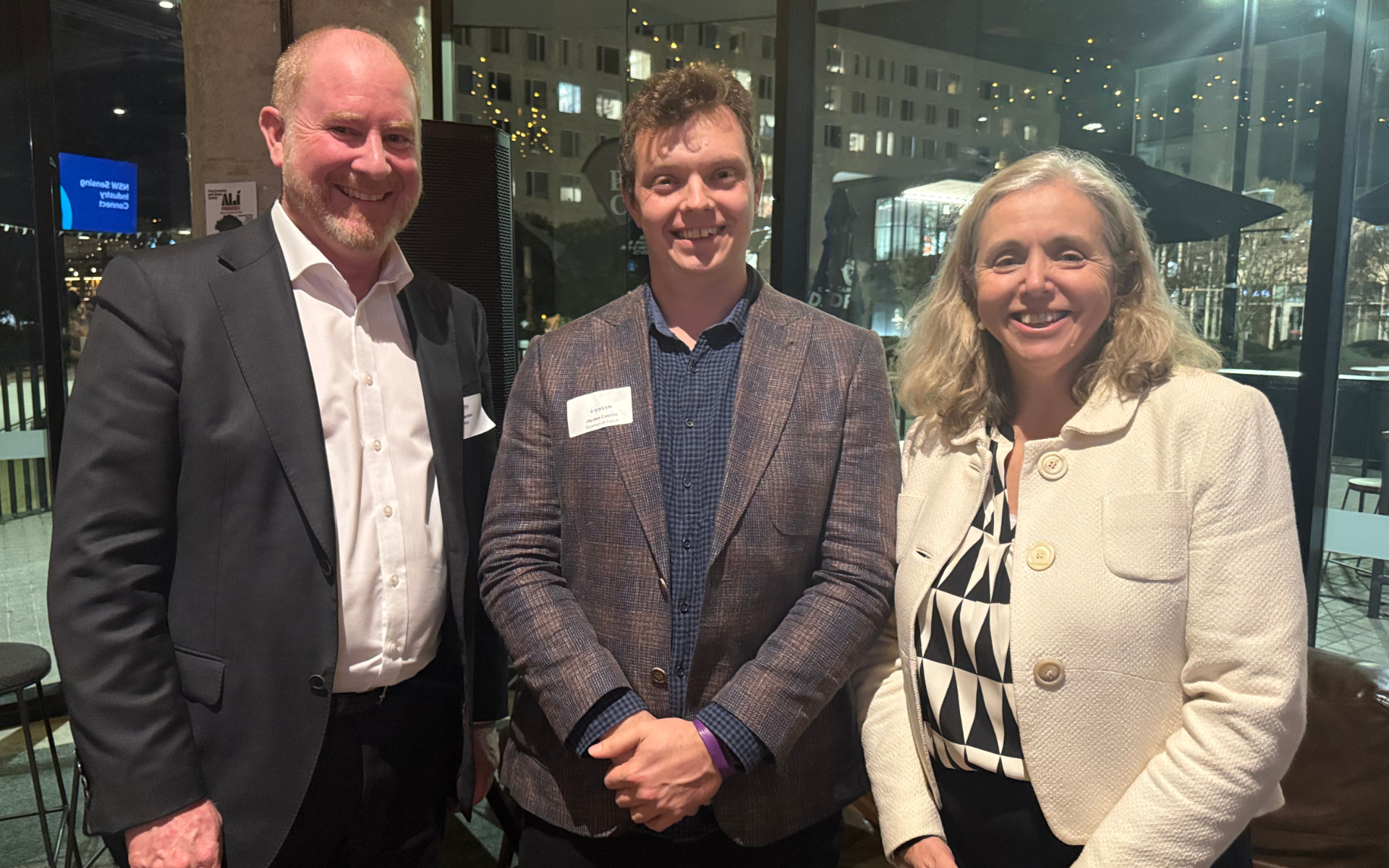Quantum Brilliance highlights diamond technology at Sensing Industry Connect
At the latest Sensing Industry Connect event hosted by the Australian National University (ANU), Canberra spin-out Quantum Brilliance outlined how it is taking diamond-based quantum sensing and computing from the laboratory and putting it into practical, real-world use.
The quarterly NSW Smart Sensing Network (NSSN) industry engagement event provides a platform for entrepreneurs, manufacturers, and researchers to connect and explore opportunities in smart sensing technology.
Quantum Brilliance Chief of Staff Jayden Castillo at Sensing Industry Connect at ANU.
ANU-spinout Quantum Brilliance launched in 2019.
The company’s breakthrough lies in harnessing the unique properties of synthetic diamond to create highly stable, pocket-sized, solid-state quantum sensors and computers which can be mass produced.
“The strength of quantum sensors is that they are fixed to physical constants, and so have high sensitivity and low drift,” Quantum Brilliance Chief of Staff, Jayden Castillo said.
“What that means you can create current sensors, for example, that would be highly resilient to thermal drift while being sensitive across a huge range of currents in a wire.”
He said the applications of quantum sensing were wide-ranging.
“Our initial focus is in magnetometry which can provide a GPS-free navigation system which uses magnetic maps of the Earth and be able to read where you are at any position in space, without the vulnerability of the GPS system,” he said.
(L-R) Professor Tim Senden, Jayden Castillo and Jo White.
“There are also future applications in biomedical. For example, being able to measure iron content in blood, or detect the reaction of neurons to various treatments and help to solve brain disease.”
Professor Tim Senden, Pro Vice-Chancellor (Research Infrastructure & Entities) at ANU, praised the long-term partnership between the university and the NSSN. The ANU joined the NSSN in 2019.
“As a compact and comprehensive university, we’re strongly aligned with the NSSN to bring academic research, government and industry together,” Professor Senden said.
“Acting together, it is the transformation of our research that most clearly returns value to our communities and the NSSN has helped us realise that effectively,” Professor Senden said.
He highlighted a project by Dr Nicholas Wilson from the ANU Fenner School for the Environment which aims to develop low-cost devices to detect moisture in bushfire-prone areas as an example of practical innovation with national importance.
The project is a collaboration with Indicium Dynamics, NSW Forestry Corporation and ACT Parks and Conservation and the Hawkesbury Institute of the Environment at Western Sydney University.
“The NSSN provides a space to capitalise on this outstanding cooperation…where the NSSN really provides value is that pipeline of partnership,” Professor Senden said.
NSSN Board Chair Jo White outlined the network’s mission: uniting industry, government, and seven universities to turn world-class research into innovation in smart sensing solutions.
“We are keenly focused on the application of smart sensing in five key areas which are helping the Australian economy advance in society—environment, agriculture, human health, natural hazards, net zero, and smart cities,” Ms White said.
The next Sensing Industry Connect will be held at the University of Wollongong on Monday 10 November.
Attendees at Sensing Industry Connect at ANU.




